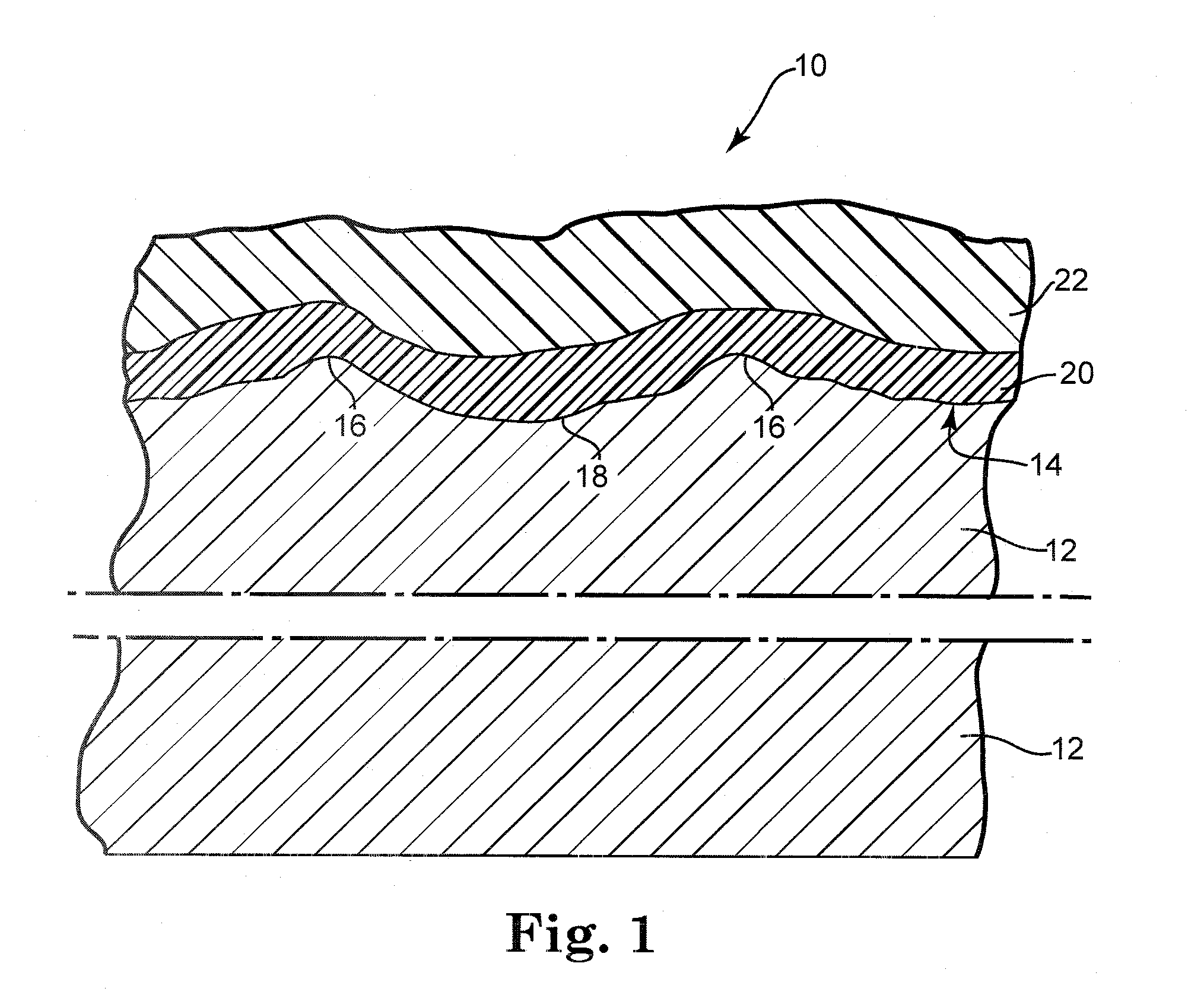Coating systems for cement composite articles
a technology of cement fiberboard and coating system, which is applied in the coating process of metallic materials, synthetic resin layered products, textiles and papermaking, etc., can solve the problems of affecting the appearance of decorative surfaces, affecting the physical and chemical properties and affecting the appearance of cement fiberboard compositions
- Summary
- Abstract
- Description
- Claims
- Application Information
AI Technical Summary
Benefits of technology
Problems solved by technology
Method used
Image
Examples
example 1
Runs: 1a and 1b
[0129] Run 1a: A reactor was charged with 758 parts of deionized water and 1.6 parts Triton X-405. The reaction mixture was heated to 75° C. under a nitrogen blanket. During heating, a pre-emulsion was formed containing: 246 parts of deionized (DI) water, 31 parts of Triton X-405, 11.2 parts RHODAPON UB, 0.7 parts sodium persulfate, 304 parts of styrene, 130 parts of methyl methacrylate, 204 parts of butyl acrylate, and 13 parts of methacrylic acid. Once the reaction mixture reaches 75° C., 1.6 parts of sodium persulfate was added to the reactor and the monomer feed started for a 3.5 hour feed rate. The reaction temperature was held between 80° C. to 85° C., during polymerization. Once the pre-emulsion feed was complete, the container was rinsed with 20 parts of deionized water and the reaction was held 30 minutes. A post reaction consisting of 0.7 parts t-butyl hydroperoxide mixed with 20 parts of deionized water and 0.5 parts of isoascorbic acid mixed with 20 parts...
example 2
Runs 2a-2c
[0131] Run 2a (Comparative Example): A latex composition was prepared by mixing the following ingredients: 44 parts water and 56 parts of latex from Run 1a.
[0132] Run 2b: A two-part “epoxy-amine” composition was prepared by mixing the following ingredients: Part ‘A’ contains 51.6 parts of latex from Run 1b; and Part ‘B’ contains 46.6 parts water and 1.8 parts EPIKURE™ 3295 amine from Hexion.
[0133] Run 2c: A two-part “epoxy-amine” composition was prepared by mixing the following ingredients: Part ‘A’ contains 36.1 parts latex from Run 1b; and Part ‘B’ contains 36.8 parts water, 25.8 parts potassium silicate (KASIL 1); and 1.3 parts EPIKURE 3295 amine from Hexion.
[0134] Equal parts by weight of ‘A’ and ‘B’ are mixed and allowed to sit for a 10-minute induction period before application to a substrate. In preferred embodiments, the coating is then applied to a fiber cement article at a theoretical dry film thickness of 0.00127 to 0.001778 cm (0.5 to 0.7 mils) by either a ...
example 3
Acetoacetyl Functional Latex Polymer
[0135] A reactor was charged with 567 parts of deionized water, and 1.5 parts RHODAPON™ UB. The reaction mixture was heated to 75° C. under a nitrogen blanket. During heating, a pre-emulsion was formed containing: 331 parts of deionized water, 56.8 parts of RHODAPON UB, 0.9 parts ammonium persulfate, 149 parts of 2-ethyl hexyl acrylate, 732 parts of butyl methacrylate, 28.1 parts of AAEM, and 28.1 parts of methacrylic acid. Once the reaction mixture reaches 75° C., 2.8 parts of ammonium persulfate was added to the reactor and the monomer feed started for a 3 hour feed rate. The reaction temperature was held between 80° C. to 85° C., during polymerization. Once the pre-emulsion feed was complete, the container was rinsed with 20 parts of deionized water and the reaction was held 30 minutes. A post reaction consisting of 0.9 parts t-butyl hydroperoxide mixed with 20 parts of deionized water and 0.7 parts of isoascorbic acid mixed with 20 parts of d...
PUM
| Property | Measurement | Unit |
|---|---|---|
| Tg | aaaaa | aaaaa |
| Tg | aaaaa | aaaaa |
| Tg | aaaaa | aaaaa |
Abstract
Description
Claims
Application Information
 Login to View More
Login to View More - R&D
- Intellectual Property
- Life Sciences
- Materials
- Tech Scout
- Unparalleled Data Quality
- Higher Quality Content
- 60% Fewer Hallucinations
Browse by: Latest US Patents, China's latest patents, Technical Efficacy Thesaurus, Application Domain, Technology Topic, Popular Technical Reports.
© 2025 PatSnap. All rights reserved.Legal|Privacy policy|Modern Slavery Act Transparency Statement|Sitemap|About US| Contact US: help@patsnap.com


